So I traded my brand new old stock varmint XL 600 mobile amplifier for a Meiko 300 plug in the wall well I can’t get no more than 100 W out of this thing PEP and that’s with any radio I use that so far my cobra 29 with a variable dead key with the swing kit And I went through and turned down my striker 955 so I can’t get 100 W with that right now I’m getting just as much power with the app as I do without it two of my tubes are glowing blue the other two are not I just never had a tube amp I’ve always used arm pills If anybody has one of these pumpkin face 300s and have the schematics for it or I can take pictures of the bottom of the inside and everything for me just so I can see if everything’s wired right because by looking at other Maaco amps someone has definitely been in the sand and did some really bad soldering but on top of that the wiring so I think it’s wrong for the heater and stuff I’m just trying to see if everything’s right and you know what I’m gonna need thank you so much guys
Attachments
-
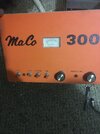 7A7E0712-9C9E-4F7E-A7CC-7D6C0B5A489B.jpeg682.8 KB · Views: 223
7A7E0712-9C9E-4F7E-A7CC-7D6C0B5A489B.jpeg682.8 KB · Views: 223 -
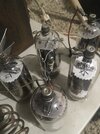 6324F432-18CE-4E05-81FC-674AE938CD3F.jpeg755.8 KB · Views: 201
6324F432-18CE-4E05-81FC-674AE938CD3F.jpeg755.8 KB · Views: 201 -
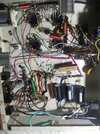 0A8460B4-BEB3-45E7-9873-5027E9AF08D4.jpeg2 MB · Views: 194
0A8460B4-BEB3-45E7-9873-5027E9AF08D4.jpeg2 MB · Views: 194 -
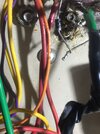 A30E2331-0C28-448E-A9BD-88A149C081CE.jpeg1.1 MB · Views: 196
A30E2331-0C28-448E-A9BD-88A149C081CE.jpeg1.1 MB · Views: 196 -
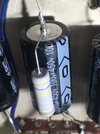 F89D9E28-3526-414E-99BD-4BF921271BE8.jpeg1 MB · Views: 189
F89D9E28-3526-414E-99BD-4BF921271BE8.jpeg1 MB · Views: 189 -
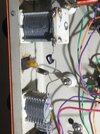 D161D787-6507-4C87-98E9-477AFDDC7323.jpeg1.1 MB · Views: 184
D161D787-6507-4C87-98E9-477AFDDC7323.jpeg1.1 MB · Views: 184 -
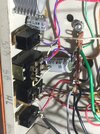 4EA9A45C-4EE7-4A99-A11B-CD0FAF5D4D84.jpeg1.2 MB · Views: 202
4EA9A45C-4EE7-4A99-A11B-CD0FAF5D4D84.jpeg1.2 MB · Views: 202 -
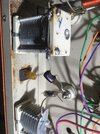 88BAB874-D087-4C5B-A318-7D040A6E7DFE.jpeg1.6 MB · Views: 196
88BAB874-D087-4C5B-A318-7D040A6E7DFE.jpeg1.6 MB · Views: 196 -
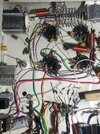 AF5E804C-48D5-4250-A31A-801B4AE241F8.jpeg1.8 MB · Views: 196
AF5E804C-48D5-4250-A31A-801B4AE241F8.jpeg1.8 MB · Views: 196
